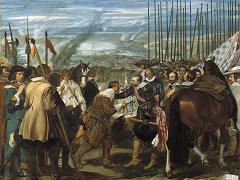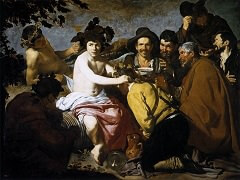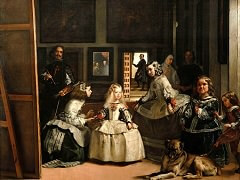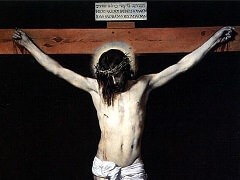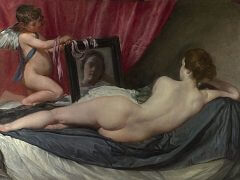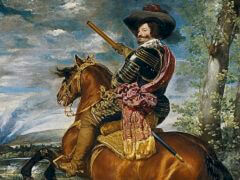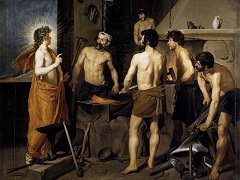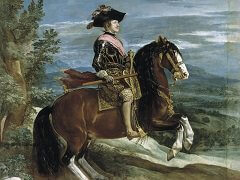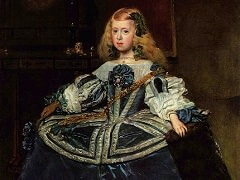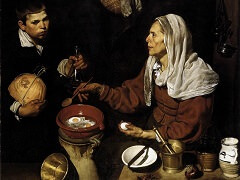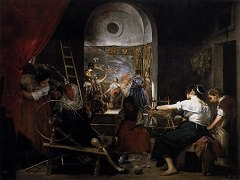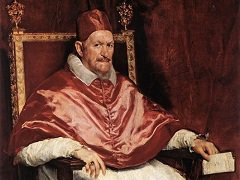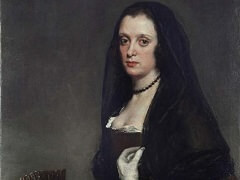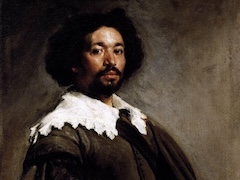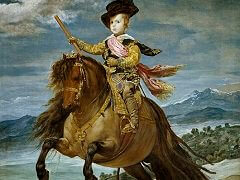Portrait of Mariana of Austria by Diego Velázquez

Velázquez stayed in Rome in 1649-50. Philip IV wanted his favourite court painter, now enjoying such a triumph in Rome, to paint his second wife, Queen Mariana, and to give his advice on the renovation of the old royal palace in Madrid, the Alcázar. Consequently, he wished Velázquez to come back to court as soon as possible, but none the less the artist delayed his return for another whole year.
The portrait of Queen Mariana required by the king was not completed until 1653. The queen was the daughter of Emperor Ferdinand III and Philip's sister the Infanta Maria, and had married her widowed uncle in 1649. She was nineteen at the time of this portrait, which shows her full length, wearing a black dress with silver braid, and of course adorned with much valuable jewellery: gold necklaces and bracelets, and a large gold brooch on her close-fitting bodice. Her right hand rests on the back of a chair, and she holds a delicate lace scarf in her left hand. The picture is bathed in harmonious shades of black and red, although the dramatically drawn curtain has been painted over by another hand.
The composition turns on the focal point of the queen's alabaster skin and rouged face, small and almost doll-like under her hair, which is dressed very wide. Her bust, tightly encased in the bodice, her stiff farthingale and all her fashionable magnificence are rendered true to life by Velázquez, and at the same time he reveals them as a theatrical show concealing the girl's natural physical nature beneath the armour of courtly constraint.

